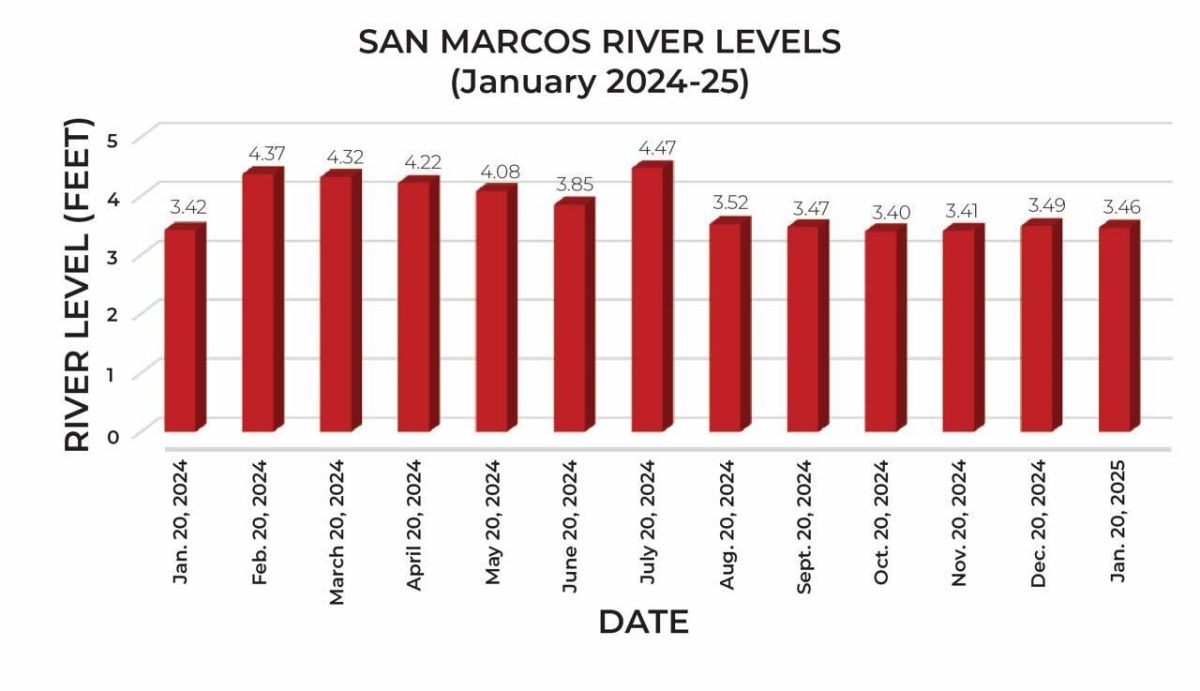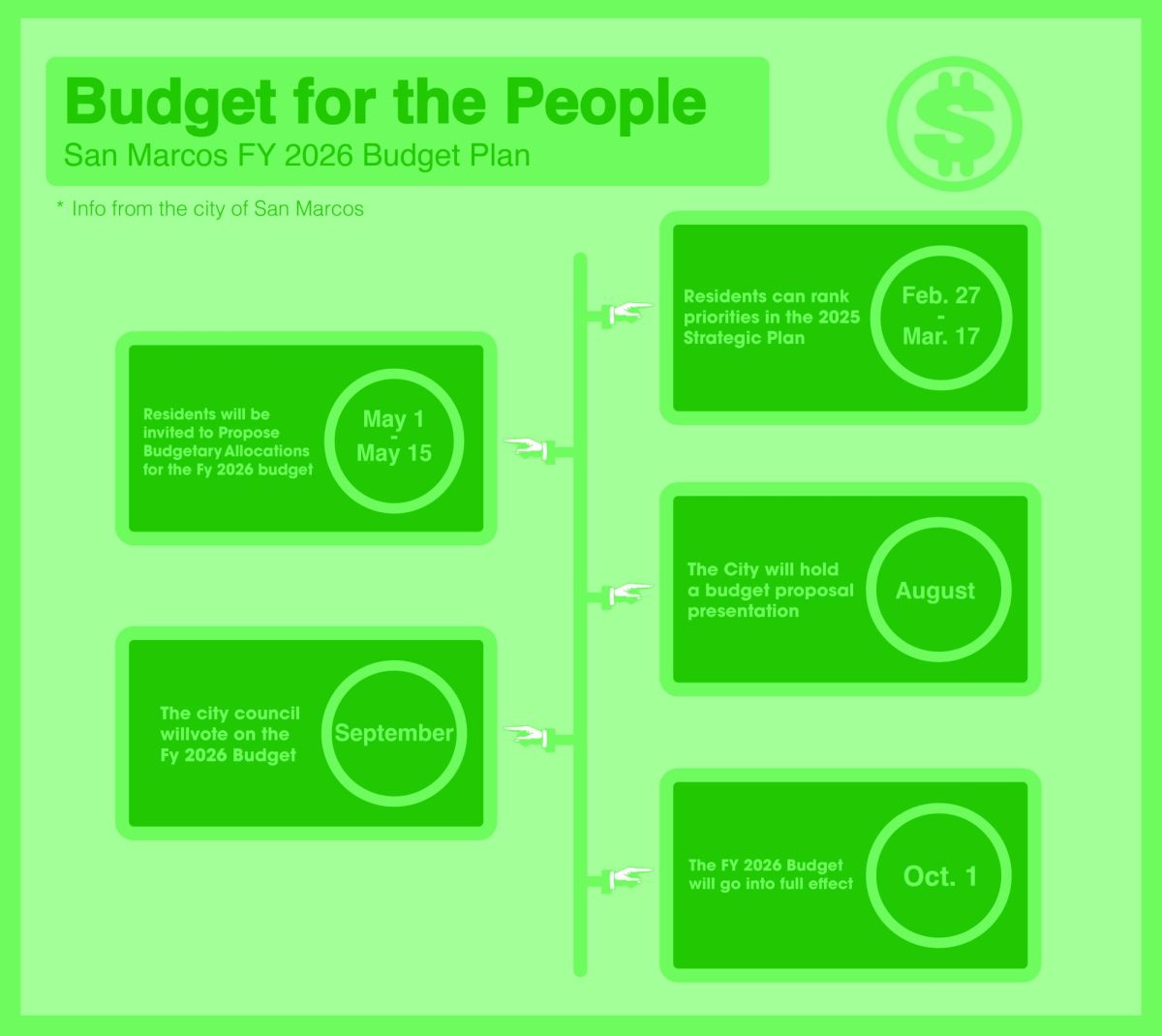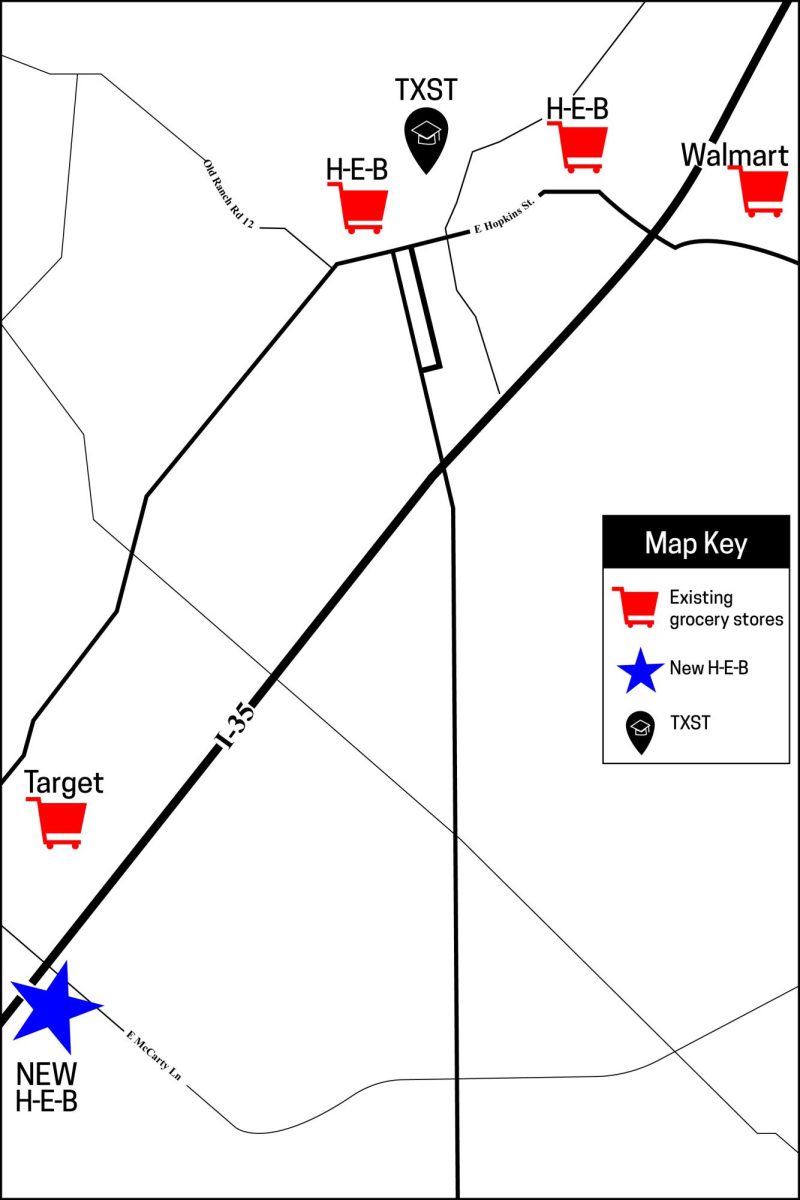San Marcos is facing its 57th driest winter in 130 years, raising expert concerns about a worsening drought and its potential impacts on the region.
Meadows Center Director Robert Mace said Hays County is facing unprecedented water scarcity, with the San Marcos River and the Edwards Aquifer at critical low levels.
According to Mace, the river typically maintains a depth of 4.3 feet, but as of Jan. 17, it had dropped to 3.51 feet, according to the United States Geological Survey.
“We are about half of the normal flow, [and] the Edwards Aquifer is at Stage 4 drought restrictions. These are the worst conditions in 70 some years [for water resources],” Mace said.
To Mace, the concern is that if not enough rainfall occurs to recharge existing water supplies and ease the current drought, then drought conditions could worsen past existing restrictions.
The ongoing drought, which began in March 2022, led the city to implement Stage 3 water restrictions on Oct. 27 and has caused water levels in the San Marcos River to drop significantly.
Mace warned Edwards Aquifer and the San Marcos River could reach record-low levels, forcing the city to reduce water availability.
A report by the Texas Water Research Institute stated tighter drought restrictions could impact tourism and recreation in San Marcos.
“Drought and extreme heat impact every part of the Texas communities and economies — agricultural production is stressed and requires more water, many municipal utilities must enact water restrictions…,” the report stated. “Lake-based tourism is impacted, industries that require outdoor labor face intense conditions and safety concerns and residents must grapple with higher utility bills.”
According to Samantha Krause, meteorology professor at Texas State, the typically dry Central Texas winter has been exacerbated by the La Niña event—a weather phenomenon that brings cold, dry air to southern regions like Texas.
“The average rainfall in January for this area is about two inches,” Krause said. “La Niña causes drier and hotter conditions in Texas. So far this January we have had less than an inch of rain in the San Marcos area.”
According to Mace, November, October and December are when water resources in Hays County, such as the aquifer, normally refill after extensive use in the hot months of June, July and August.
Krause said it is unlikely that Hays County and San Marcos will escape the dry conditions before the start of May.
“Spring is generally wetter on average in Texas, but with La Niña in place, it might be drier than average for the next few months,” Krause said. “[The National Oceanic and Atmospheric Administration] predicts that La Niña conditions are expected to persist through February-April 2025.
However, Mace said existing water resources can meet the community’s needs through at least 2025.
“I’m not in full freak-out mode over the drought… there’s still enough water in the aquifer to get us through the next year,” Mace said. “We have to see how bad it is over the next year.






















jerry w mayhall • Jan 22, 2025 at 4:49 pm
Why does the County and State continue to encourage development when our water resources are in question?